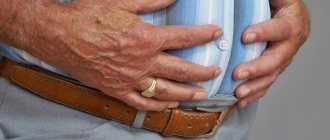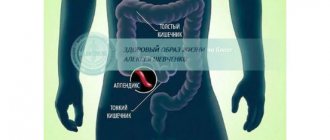One of the most common types of surgery is surgery to remove appendicitis. Today, medical practice has developed a wealth of theoretical and practical experience in this area. The operation and rehabilitation period do not take much time. However, many patients are concerned about the question: how long do they stay in the hospital after appendicitis? Possible contraindications and complications after appendicitis surgery.
Types of physical activity
Patients who have undergone surgery to remove the appendix are required to have a recovery period, the correctness of which determines the success of the entire treatment. During rehabilitation in the life of a patient who has undergone an appendectomy, the following types of activities are allowed:
- yoga;
- Pilates;
- jumping;
- dancing;
- run;
- gymnastics;
- swimming;
- fitness.
The choice of classes is based on the patient’s condition and the complexity of the surgical intervention. Thus, you cannot perform loads if abdominal surgery was performed, the patient needed resuscitation, and antibiotics were used. In this case, any sport, even the easiest one, can negatively affect the course of the rehabilitation period.
Additional restrictions
The operation to remove the appendix belongs to the category of simple and non-traumatic procedures. In rare cases, the following complications may occur:
- Problems with urination;
- Cardiac dysfunction caused by blood loss;
- Infection due to violation of hygiene rules;
- Inflammatory process of internal organs;
- Negative effects of anesthesia;
- Adhesions and obstruction of the intestinal tract.
They are due to two factors:
- The disease was diagnosed at an advanced stage;
- Failure to comply with the recommendations of the attending physician.
In each case, drug treatment is prescribed in combination with physiotherapy and therapeutic exercises.
In severe situations, repeated surgery is performed. If complications occur after an appendectomy, sports are allowed after six months, and heavy lifting is allowed twelve months after the operation. In such conditions, constant wearing of a bandage is recommended to prevent tension in the suture area.
Features of the event
In the first month after appendix surgery, you should refrain from physical activity.
How long after you can start playing sports after appendix removal depends on the type of surgery. If laparoscopy was performed, which is a surgical method in which the intervention is carried out through small holes, while traditional appendectomy requires large incisions, then you should refrain from exertion for 30 days. This time is enough for wounds to heal, muscles to recover, and no problems in the form of lumps or lumps to arise. A patient who has undergone abdominal surgery to remove the appendix should be more careful with physical activity and completely abandon it for the first time.
In any case, after appendicitis you need a gentle regime for at least a month, more complex exercise is prohibited for 3 months. These restrictions are due to the need for complete scarring of the sutures and healing of the wound. People who have undergone surgery to remove appendicitis need to start an active life with walking in the fresh air. In addition, visiting the pool is allowed, and it is better to postpone fitness for a while.
Methods of surgical treatment
In surgery, two main methods are used to remove the appendix: open appendectomy and laparoscopy.
In the first case, the surgeon makes a 10-centimeter incision in the abdominal cavity. This is significant damage to the integrity of the abdominal wall, so its healing takes a long time. During laparoscopy, the integrity of the abdominal wall is slightly violated - three punctures are made, each 2 centimeters in size. After this method, healing of the wound surface and internal tissues proceeds more easily. In both cases, patients are advised to rest completely for 24 hours and take painkillers for the next two days after the surgical procedure.
How long after appendicitis can you play sports?
In the absence of complications
If after appendicitis the patient’s condition is normal and there are no complications, then after a month he is allowed to participate in light sports that do not involve the abdominal muscles. Doctors recommend dancing, swimming, yoga and running in the fresh air. You can pump up your abs, lift dumbbells, barbells and perform heavy exercises after appendicitis only after 3 months. For the same period, you should refrain from playing football, basketball and volleyball. With laparoscopy, patients can begin training within 30 days. It is extremely important when returning to physical activity to adhere to the following rules:
You need to continue playing sports after appendicitis after your doctor approves it.
- To go to the gym for the first time, you must obtain permission from your attending physician;
- start exercises gradually and systematically;
- refrain from lifting weights, bending forward and to the sides, which involve the abdominal muscles;
- give preference to simple exercises;
- start pumping up your abs after your body gets used to light activity;
- If you feel pain in the lower abdomen or even the slightest discomfort, it is important to immediately stop exercising and inform your doctor.
If available
If, after a surgical intervention to excise the appendix, the patient has complications, then he needs longer bed rest. Walking is allowed only 48 hours after appendicitis. For 3 months, it is allowed to lift a weight of no more than 3 kg; subsequently, the lifted load should not exceed 5 kg. For each patient, the duration of the restriction is different; for some it is a month, while for others it will be necessary to refrain from activity for six months.
Breathing exercises are allowed after appendicitis. Doctors recommend carrying it out from the first hours of the rehabilitation period. If the wound heals quickly, you can engage in physical exercise, run, and swim after 2-3 months. If complications arise after appendicitis, then limit lifting weights for about 12 months. To completely protect themselves from possible complications, patients are advised to wear a bandage when lifting heavy objects in order to support the muscles and reduce the load on them. Well-planned and properly selected exercises will help you to add to your previous physical activity regimen. You should be prepared for the fact that it will take a lot of time for a full return; there is no need to rush into sports. It is extremely important to agree with the treating doctor on the level of difficulty of classes and the intensity of stress during the rehabilitation period of appendicitis.
Rehabilitation rules
In the postoperative period, it is important to monitor the suture and inspect it for the presence of various neoplasms. If there are any, then this should alert the patient and force him to visit a medical facility as soon as possible. Often, seals on or around the sutures indicate the accumulation of pus and blood under the skin, which is dangerous for the development of serious complications. Even a small lump is a reason to stop training until the circumstances of its appearance are clarified. During the rehabilitation period, you need to be especially careful about your health and unconditionally follow the recommendations of your doctor.
Many people cannot live without constant physical activity. By maintaining an active lifestyle, they improve health and, by maintaining youth for a long time, prolong life. When people undergo surgery, their daily routine is disrupted and they are forced to limit themselves during the post-operative recovery period. The main issue is the duration of rehabilitation, since they cannot fully train.
The cecum, as part of the digestive system, is involved in the process of digesting food. The vermiform appendage of the cecum is called the appendix. For a long time it was considered an atavism, since, being part of the digestive tract, it does not participate in its work. Modern research claims that the appendix plays an important role in the immune system - the cells it produces protect the intestines from foreign aggressive bacteria.
Appendicitis is an inflammation of the appendix of the cecum. The causes of the pathology have not been established - anyone can get sick. As a treatment, medicine offers the only option - emergency surgery.
Removal of the appendix of the cecum is the most common medical operation in the world. Timely diagnosis of the disease and provision of medical care will reduce the likelihood of dangerous complications and allow you to recover as quickly as possible. Therefore, at the first suspicion of appendicitis, you should immediately contact a medical facility.
The role of therapeutic exercises after surgery
To effectively restore the body in the postoperative period, it is recommended to engage in therapeutic exercises.
Such exercises will quickly return the patient to their previous shape. At the same time, no adhesions or pneumonic pathological manifestations occur.
Sports after appendicitis - what is possible and what is not?
It all depends on the form and stage of the disease. During simple catarrhal appendicitis, patients can rise or change position after 4-6 hours. This greatly improves the condition of the intestines, preventing the formation of adhesions.
In cases where appendicitis is gangrenous or complicated by peritonitis, patients remain in bed for 2 days. After this time has passed, you can move with the help of staff.
During the postoperative period, it is recommended not to do any physical activity. For a month, it is not recommended to lift heavy objects or stand for a long time. There is no need to perform fast movements, especially with jerks. Failure to comply with such simple conditions will result in the seams coming apart.
Summarizing
Only careful planning of all actions leads to positive results. With their help, you can quickly return to your normal way of life.
It is important to understand that you can return to your previous way of life, but haste is just inappropriate here. Any mistake can cause serious consequences.
People who are used to leading an active lifestyle are concerned about when can they play sports after appendicitis? Physical activity is useful and necessary for people, but it is better to avoid it in the postoperative period. How long it will take for the body to fully recover after removal of appendicitis depends solely on the type of operation and the general condition of the patient. In any case, only the attending physician can give the go-ahead to exercise, after assessing the patient’s well-being and test results.
When can you walk after appendicitis?
If appendectomy is performed for uncomplicated catarrhal, phlegmonous or gangrenous appendicitis, you can and should walk within 5-6 hours after the operation. Early activation of patients is always welcome.
Complicated forms of acute appendicitis (gangrenous-perforated, peritonitis, periappendiceal abscess) force one to refrain from walking for 1-2 days. Everything depends on the actual capabilities of the patient and is decided individually in a particular case. It is better if you sit on the bed with your legs down for a few minutes before walking on your own. Only after this, under the supervision of medical staff or relatives, stand up and take a few steps. Subsequent walking will be much easier and painless.
Is it possible to swim after appendicitis?
Full bathing after an appendectomy until the sutures are removed is out of the question. Local washing of individual areas of the body is not only permitted, but must be carried out daily.
The main condition is that water and hygiene products should not get on the postoperative wound. Full bathing can only be allowed after the stitches are removed. It is better if it takes place over the course of two weeks using a shower. After this time, swimming in any form is allowed.
Physical activity after appendicitis
Appendectomy involves a gentle regime for a month after the operation. Heavy physical activity is contraindicated for 3 months. This means that patients have the right to be on sick leave for 30 days from the date of the operation.
Loads within the scope of normal everyday life (slow and short walking, housework) are allowed. Avoid prolonged standing. Compliance with such a gentle regimen is necessary for normal scarring of the postoperative wound and the prevention of its failure in the form of dehiscence or hernia.
Found an error in the text? Select it and a few more words, press Ctrl + Enter
Sick leave
During the recovery period, doctors prescribe rest and home regimen. During this time, people are entitled to sick leave. The duration of treatment is determined by the person’s condition and the nature of the work. When the condition normalizes, patients are discharged, but with restrictions on physical activity. Schoolchildren are exempt from physical education.
When visiting a doctor, consult carefully. Persistently ask about your health status, answer your doctor's questions honestly, follow all recommended restrictions, and do not create additional health risks for the sake of wanting to immediately return to sports training.
Sports after appendectomy
For a month after the appendectomy, professional sports are out of the question. To keep athletes in shape, physical therapy is mandatory. Its main emphasis is on the work of the muscles of the limbs. The abdominal muscles should be at rest during this period. After a month, you can include them in a set of exercises, but not very intense ones.
It is also better to refrain from running during this time. It is replaced by leisurely walking and leg exercises. Full weightlifting is permissible no earlier than after 3 months. Fans of active sports games (football, volleyball, basketball, etc.) should follow the same rule.
General rules for returning to sports training
Restriction in sports exercises after appendectomy is required for normal wound healing and to prevent the appearance of a hernia. You can fully engage in sports after appendicitis after the recovery period is over.
The return to an active lifestyle occurs gradually and is subject to certain rules:
- The first exercises only with the permission of the attending physician;
- Gradual increase in load;
- Visual inspection of the condition of seams;
- Be sure to monitor the sensations in the abdominal area; if discomfort occurs, stop exercising and inform the doctor about this;
- Abdominal exercises are prohibited until the incisions in the peritoneal tissue heal.
First postoperative days
A decrease in physical activity leads to the formation of adhesions in the operated area. In order to prevent the development of complications, a course of therapeutic exercises is prescribed. Daily leisurely walks lasting at least 30 minutes are allowed. Lying on your back, you are allowed to do simple exercises to strengthen your arms and legs. The main thing is to control the tension in the seam area and not make sudden movements.
One month after the procedure
After a month, light and short physical activities are allowed, and the course of physical therapy continues.
Do not lift weights or strain your abdominal muscles. Patients are allowed to participate in the following sports - yoga, Pilates, dancing, swimming.
3-6 months
Intensive training resumes. Sports games and weight lifting weighing no more than 5 kilograms are allowed. After six months, the weight limit increases to 10 kilograms, and abdominal exercises are included in the training.
It should be noted that the indicated time limits are conditional and in each individual case are established by the attending physician.
Is it possible to smoke after appendicitis?
If an experienced smoker has been operated on for acute appendicitis, then no recommendations or warnings from doctors will affect his decision to smoke in the postoperative period. Smoking does not have a direct effect on the course of the wound process. But a negative effect on the respiratory tract and lungs is typical. Therefore, it is better to refrain from smoking for 3 days during the typical course of the postoperative period, so as not to provoke laryngospasm. In more complex cases of complicated appendicitis, this period should be continued as long as possible.
After surgery
After surgery to remove appendicitis, the patient is placed on a bed with a low headboard and his condition is closely monitored. Recovery from anesthesia occurs individually. For example, the patient begins to move suddenly, which leads to disruption of the integrity of the sutures. After appendicitis surgery, nausea may occur, so on the first day, if vomiting occurs, you should carefully turn the person onto his side (left).
The postoperative period is difficult in the first 24 hours, and then the symptoms gradually disappear. If rehabilitation after appendicitis occurs without complications, it takes much less time. So, after 8 hours, the patient can rise in bed and make careful movements, but it should be remembered that under no circumstances should one get up completely. The thirst that inevitably arises after the use of anesthesia is not immediately quenched - just slightly moisten your lips.
After appendicitis in children and the elderly, as well as in overweight patients, recovery is slower.
Recovery after surgery includes several stages, the first of which lasts about five days. The day after the appendectomy, the medical staff carefully monitors the patient’s condition.
Once the operating room is left behind, the rehabilitation period begins. At this time, the patient often experiences symptoms such as:
- Nausea, vomiting.
- Low-grade fever.
- Discomfort in the area of the seams.
- Blood pressure surges.
- Difficulty emptying the bowel and bladder.
Factors influencing recovery time
After doctors cut out the affected appendix, a disruption in the functioning of the body’s functions occurs: digestion slows down, respiratory function is depressed, and general tone decreases.
The length of the recovery period after appendicitis is determined by various factors:
- Individual characteristics of a person - gender, age and weight;
- Accompanying illnesses;
- Reaction to anesthesia;
- Type of surgery: laparoscopy or open method;
- Stage of the inflammatory process.
Young people recover faster than older people and children. Postoperative complications and severe stage of the disease require additional efforts to combat possible infection. Physical activity after removal of appendicitis is under strict medical supervision.
Features of wound healing
Suture after appendicitis is an important postoperative moment. After what time the stitches are removed and how many days the wound heals are also pressing questions. A suture is the connection of tissues after surgery. They are internal and cutaneous. The former connect the abdominal muscles, and the latter connect the cut skin.
The photo shows the appearance of a suture after appendicitis. It is located above the pubic area on the right and has a length of up to 10 cm. The surfaces of the skin suture are hard. When stitching, threads are used that are absorbable after surgery (for internal sutures) and those that need to be removed.
Sutures are removed within the time frame specified by the doctor. Usually, sutures are removed after appendicitis after a decade, but on what specific day the procedure will be scheduled is decided individually, depending on the formation of a crust (granulation). Does the patient feel pain when the external sutures are removed? There is some discomfort, but nothing more.
If the seam hurts, lumps, discharge, or itching appear, this indicates that the seams have come apart. If the external seam is separated, hyperemia, itching and peeling are observed, and when the internal seams are separated, the situation is more serious - severe pain, vomiting appears, and an infiltrate or other neoplasm is visible.
With improper care and incorrect rehabilitation, the stitches may come apart. The reasons why the sutures come apart lie in non-compliance with the recommendations of the attending physician, as well as in poor-quality wound treatment. Accordingly, the amount of time allotted for the healing of sutures is directly proportional to compliance with the hospital regime and the postulates of sterility.
If a child is operated on, then parents or junior medical staff monitor compliance with the rules. Children are under constant medical supervision, since negligence leads to sutures coming apart and causing inflammation. Consequently, sick leave after appendicitis becomes longer.
The duration of recovery depends on the type of surgery on appendicitis (more precisely, the appendix). Laparoscopy for appendicitis, for example, can minimize negative symptoms and significantly shorten the postoperative period. Accordingly, this will affect the duration of sick leave. When performing laparoscopy, doctors will give you time off from work for about a week. Appendectomy performed by laparoscopy is preferable, of course, in the absence of contraindications. The cosmetic appearance of the suture section is more aesthetic because it is less noticeable if laparoscopic surgery is performed.
After the operation, sick leave is given for an average of a month. How long patients stay in the inpatient department is an individual question, depending on the absence of complications. Most often, after 10–12 days, after removing the stitches, doctors send the patient home with the condition of following a gentle regime. Sick leave lasts longer for the elderly and children - they must be supervised. For adults, it is given for a period of 15 to 30 days. In any case, how long the sick leave lasts is decided by the attending physician, and it also depends on the type of operation.
The body must be protected
Medical rehabilitation is the key to proper restoration of all body systems. The attending physician will tell the patient that after appendicitis, sports are out of the question for 5-6 days from the date of surgery. The starting point here is the moment of immediate removal of the sutures. If the patient does not have any pathologies, he will be informed when he can return to normal physical activity.
The patient must ensure that no hygiene products or even water gets into the suture site. A small amount will be enough to cause irritation or even inflammation. That is why throughout the entire post-operative period the recommendations of the attending physician should not be violated.
Speaking about the possibility of physical activity after removal of appendicitis, in most cases it falls under a complete ban for the next 30-50 days after the operation. In many ways, this period directly depends on the actual state of health of the patient and the rate of tissue regeneration. It is important to note that such a doctor’s recommendation should be taken correctly.
On the one hand, a person should not burden himself with hard work, and on the other hand, he can engage in a leisurely household routine that does not involve much stress. It is important to avoid prolonged standing in an upright position for 10-12 days after appendicitis removal.
All this will allow the body to recover faster. As a rule, you are allowed to pump up your abs after surgery after 2-4 months.








